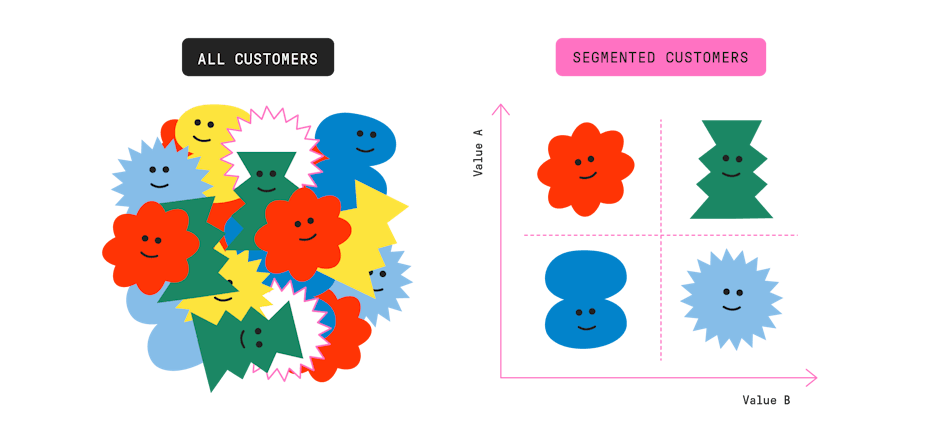
08
January 2021
9 Top Digital Marketing trends for this year
So far, the digital marketing trends for 2021 seem to revolve around two distinct, but almost contradictory concepts. First is a general humanization, addressing real issues and tailoring content to suit the individual (as opposed to mass appeal) for more personal engagement. Second is a much more mechanical and technical optimization, fine-tuning the behind-the-scenes areas like SEO and how you structure campaigns—the nitty-gritty that your satisfied customers don’t see.
Below, we’ll cover 9 of the hottest digital marketing trends of 2021, to give you a head-start over your competition. Take these marketing trends to heart and consider them when outlining your own digital marketing strategy for the new year.

Here are the 9 best digital marketing trends of 2021:
- Inclusivity
- Featured snippets & no-click searches
- Sustainability: loud and proud
- Ad-blocker blockers
- Image and video SEO for visual searches
- Interactive content
- Customer segmentation
- Local SEO
- Oldies but goodies
1. Inclusivity
One look at the front page headlines shows the significance of inclusivity in our current time-and-place in history. Greater numbers by the day, especially younger audiences and marginalized groups, want to see a more optimistic depiction of equality in the content they consume and the brands they purchase from. Or more accurately, they don’t want to see the same homogeneous content we’re accustomed to from previous decades.
In 2021, digital marketing includes media and subject matters that cover a variety of races, sexualities, religions, etc., as well as representation for people with physical disabilities and learning disabilities. This includes the content for your imagery and videos, but also the topics you discuss in social media and blogs, or even the line of products you offer.

According to Accenture, this cultural shift is already affecting purchasing behavior: 41% of shoppers “have shifted… their business away from a retailer that does not reflect how important [identity and diversity] is to them.” The same study showed that 29% of consumers are willing to switch brands completely if they don’t showcase enough diversity—and that percentage just goes up for ethnic minorities and the LGBT+ community.
2. Featured snippets & no-click searches
For many, many years, the goal of SEO has been to get your listing in the “position number one” spot of search results. Now, going into 2021, the end-goal is continuing to shift to more SEO visibility in “position zero.”
Position zero refers to Google’s “featured snippet”, and 2021 SEO marketing trends are prioritizing it above all else. The featured snippet works differently than other search results entries—for one thing, it’s separated by a small box and located at the top. More importantly, it also displays extra, relevant information with the attempt at answering the user’s question without them needed to click on it, prompting the nickname “no-click search.”
Although it sounds counter-intuitive to forego someone clicking on your link, the recognition you get as a thought-leader outweighs a single click/visit. Moreover, featured snippets are sometimes read aloud with Google Assistant voice searches.
If you’re going to target a featured snippet yourself, there’s a few things to know. For starters, featured snippets are mostly for long-tail keyword phrases like questions (such as “how to design a logo”). They come in different forms, from step-by-step lists to straight-up definitions to even videos (and more), so match your content with the appropriate format.
In the content itself, make sure you answer the keyword question clearly and succinctly, preferably with bulleted lists or a table structure.
3. Sustainability: loud and proud
Just like the digital marketing trend of inclusivity, people in 2021 are similarly passionate about environmentalism. They want to make sure the brands receiving their money are just as concerned for planet earth as they are.
With 81% of consumers strongly feeling companies should help improve the environment, what we’re seeing is a popularity boost for sustainable and eco-friendly brands, especially for younger consumers. This goes well-beyond the market for green products—every brand can benefit by broadcasting their sustainable practices.
The key is communicating your sustainability through your branding and content to make environmentalism part of your identity. There are plenty of different ways depending on your branding style, such as displaying a banner prominently on your site, or discussing it repeatedly on social media. You can even opt for more subtle methods, such as branded reusable tote bags or conveying green themes through your brand’s visual identity.
4. Ad-blocker blockers
The digital marketing trends of 2021 aren’t all about positivity and progress—it’s also about overcoming obstacles like ad blockers. With 27% of internet users expected to use ad blockers in 2021, many marketers are having their primary stream of traffic automatically cut off at the source, including PPC campaigns.
First, you want to check how big of a problem it is for you—your ad data and analytics should tell you what you need to know. Depending on your target audience or where you post ads, the damage might be negligible.
If your ads do fall victim to ad blockers, your best strategy is to adapt—don’t waste time trying to convince potential customers to change their own preferences. Readjust your advertising budget to suit other, more fruitful campaigns, like influencer marketing or sponsored content. Younger audiences don’t respond well to display ads anyway, but they do respond well to influencer marketing, so making the switch is advisable in any situation.
5. Image and video SEO for visual searches
You already know you can search for images and videos by typing in keywords, but did you know you can also submit existing images for a search, or even take original photos and search for context? As more users discover these visual search techniques, it changes the overall landscape of SEO in general.

To capitalize on the increased amount of visual searches, you want to make sure your image and video SEO campaigns are in tip-top shape. For starters, apply the basics:
- always include alt text in your image descriptions
- add images to your sitemap or create a dedicated image sitemap
- include your target SEO keywords in the file name of your image
- use top-quality images and videos, including HD
Moreover, familiarize yourself with Google Lens, especially if you’re an ecommerce brand. Handle your SEO techniques right, and you can take traffic away from competitors when shoppers conduct picture searches for products or barcodes.
6. Interactive content
Here’s a trend that’s technically been around for awhile, but it’s just now being recognized as a best practice. Interactive content doesn’t just promote more engagement, it also improves the user’s enjoyment.
Interactive content like quizzes, open-ended questions, surveys, contests, giveaways, polls, calculator widgets, etc., can do wonders for your brand. At the very least, they increase the length of time users engage with you, which helps your standing in algorithm-based searches and feeds. But more importantly, people want to be engaged, so interactive content almost always improves your user experience.
Interactive content is part of the greater trend towards personalization; by allowing the users to answer for themselves or have their opinion heard, they feel a more personal connection to the brand. Don’t forget it can also be used to collect data on user preferences, such as for product or site improvements.
7. Customer segmentation
Another trend that’s not new but rather newly popular is customer segmentation. The idea is simple: instead of a small number of large marketing campaigns targeting general audiences, it’s better to have a large number of small marketing campaigns targeting specific audiences.
Customer segmentation means grouping your target audience by certain traits or behaviors, such as demographics or shopping habits. This allows you to more accurately tailor your content to suit their preferences; for example, having two separate email lists for big spenders and small spenders, and sending different newsletters to each that feature different products.

This strategy works best for personalization and customer engagement, as your followers receive content hand-picked for them. Beyond email lists, you can apply customer segmentation to specialized ads on different sites, categories of blog content and social media content for multiple communities.
8. Local SEO
Google frequently updates their local SEO algorithm, so if you’re a local business, you should continuously update your business’ appearance in local results too. In a way, local SEO is even more powerful than broad SEO—people searching for a specific type of business with their geographic location have more intent to purchase, so it’s easier to convert them.
For starters, you have to get verified by Google. You can do this by signing up for Google My Business and either claiming your listing or creating a new one. This helps you rank higher in Google SERPS, and also gives you the chance to offer additional information about your company to online searchers.
Additionally, you want to incorporate local keywords prominently into your SEO strategy. Obviously, prioritize the name of your city or town as a top keyword, but you can go the extra mile by also incorporating related keywords. If your location has a famous landmark or quirky claim-to-fame, mention it once or twice.
9. Oldies but goodies
Not all of the best digital marketing trends of 2021 are from 2021. Plenty of marketing trends from last year or the year before are still going strong, and will continue to be game changers throughout the next year as well. And if you still haven’t implemented them yet, there’s more urgency now than ever before.
In particular, don’t forget about these ongoing digital marketing trends from 2020:
- Shoppable Posts: social media posts that directly connect users to product checkout tend to increase conversions by streamlining the payment process. See if you’re eligible for Checkout on Instagram.
- Gen Z Marketing: last year saw the eldest of Gen Z turning 18 and entering the workforce. If you want to infiltrate this young market, first understand the best practices for marketing to Gen Z.
- Microinfluencers: as opposed to premier influencers, microinfluencers are more like average people who have a larger-than-average social media follower. If you attract enough of them, typically through social media contests and giveaways, you can achieve the same numbers as top-level influencers at a fraction of the cost and effort.
- Voice Search SEO: since voice assistants first hit market a few years ago, voice searches have been upending traditional SEO tactics—people don’t use the same keywords when they talk as when they type! Try altering your SEO strategy to incorporate speech keywords.
Source: https://99designs.com

